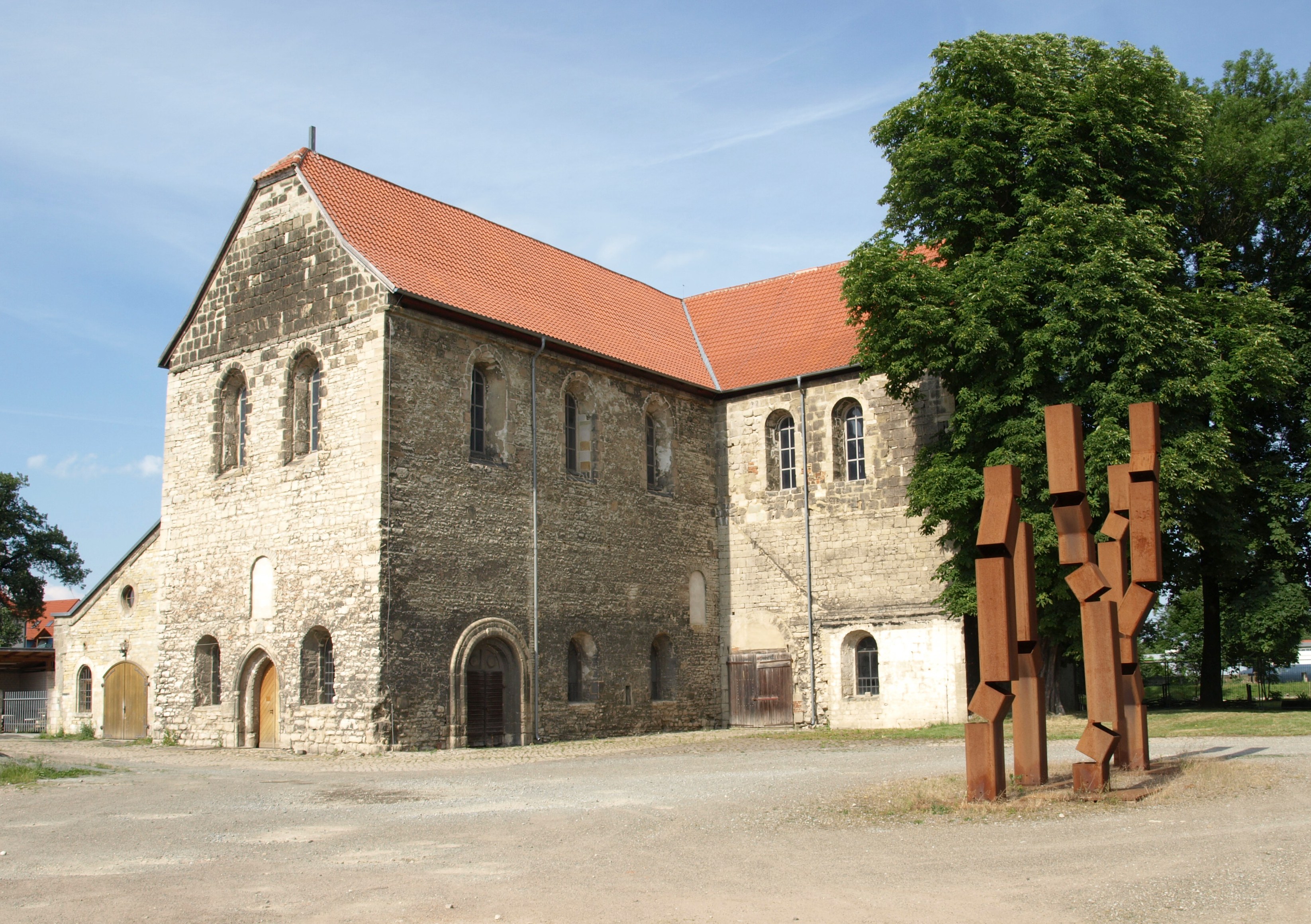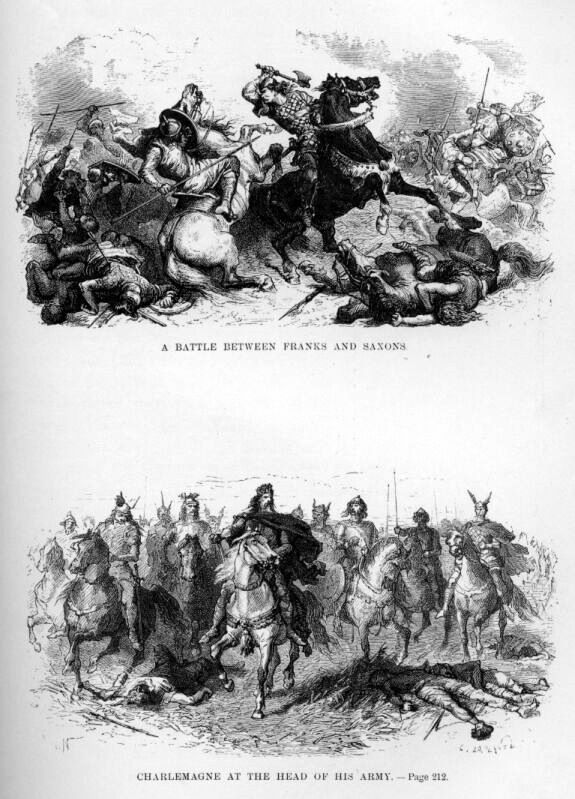|
Princely Abbey Of Corvey
The Princely Abbey of Corvey ( or ) is a former Benedictine abbey and ecclesiastical principality now in North Rhine-Westphalia, Germany. It was one of the half-dozen self-ruling '' princely abbeys'' of the Holy Roman Empire from the Late Middle Ages until 1792 when Corvey was elevated to a prince-bishopric. Corvey, whose territory extended over a vast area, was in turn secularized in 1803 in the course of the German mediatisation and absorbed into the newly created Principality of Nassau-Orange-Fulda. Originally built in 822 and 885 and remodeled in the Baroque period, the abbey is an exceptional example of Carolingian architecture, the oldest surviving example of a westwork, and the oldest standing medieval structure in Westphalia. The original architecture of the abbey, with its vaulted hall and galleries encircling the main room, heavily influenced later western Romanesque and Gothic architecture. The inside of the westwork contains the only known wall paintings of ancient ... [...More Info...] [...Related Items...] OR: [Wikipedia] [Google] [Baidu] |
Westwork
A westwork (), forepart, avant-corps or avancorpo is the monumental, west-facing entrance section ("west front") of a Carolingian, Ottonian, or Romanesque church. The exterior consists of multiple stories between two towers. The interior includes an entrance vestibule, a chapel, and a series of galleries overlooking the nave. A westwork is usually broader than the width of the nave and aisles. It is sometimes used synonymously with narthex. The structural purpose of the massive westwork is to resolve the horizontal thrust of the east-to-west arcades of the nave. Church towers as a part of a church began with the construction of the first westworks. Charlemagne dreamt of reviving the Roman Empire in the West. His dream along with his artistic skillset allowed him to implement artwork into buildings with westwork during this time period and can be found in the Corvey Abbey and scattered throughout other westwork buildings today. The Corvey Abbey (built in 885) located in ... [...More Info...] [...Related Items...] OR: [Wikipedia] [Google] [Baidu] |
Paderborn
Paderborn (; Westphalian language, Westphalian: ''Patterbuorn'', also ''Paterboärn'') is a city in eastern North Rhine-Westphalia, Germany, capital of the Paderborn (district), Paderborn district. The name of the city derives from the river Pader (river), Pader and ''Born'', an old German term for the source of a river. The river Pader originates in more than 200 springs near Paderborn Cathedral, where St. Liborius is buried. History Paderborn was founded as a bishopric by Charlemagne in 795, although its official history began in 777 when Charlemagne built a castle near the Paderborn springs.Ed. Heribert Zelder, Tourist Information Services, ''Welcome to Paderborn'', Stadt Paderborn: Paderborn, Germany, 2009. In 799 Pope Leo III fled his enemies in Rome and reached Paderborn, where he met Charlemagne, and stayed there for three months. It was during this time that it was decided that Charlemagne would be crowned emperor. Charlemagne reinstated Leo in Rome in 800 and was crow ... [...More Info...] [...Related Items...] OR: [Wikipedia] [Google] [Baidu] |
Synod
A synod () is a council of a Christian denomination, usually convened to decide an issue of doctrine, administration or application. The word '' synod'' comes from the Ancient Greek () ; the term is analogous with the Latin word . Originally, synods were meetings of bishops, and the word is still used in that sense in Catholicism, Oriental Orthodoxy and Eastern Orthodoxy. In modern usage, the word often refers to the governing body of a particular church, whether its members are meeting or not. It is also sometimes used to refer to a church that is governed by a synod. Sometimes the phrase "general synod" or "general council" refers to an ecumenical council. The word ''synod'' also refers to the standing council of high-ranking bishops governing some of the autocephalous Eastern Orthodox and Oriental Orthodox churches. Similarly, the day-to-day governance of patriarchal and major archiepiscopal Eastern Catholic Churches is entrusted to a permanent synod. Usages in diffe ... [...More Info...] [...Related Items...] OR: [Wikipedia] [Google] [Baidu] |
Louis The Pious
Louis the Pious (; ; ; 16 April 778 – 20 June 840), also called the Fair and the Debonaire, was King of the Franks and Holy Roman Emperor, co-emperor with his father, Charlemagne, from 813. He was also King of Aquitaine from 781. As the only surviving son of Charlemagne and Hildegard (queen), Hildegard, he became the sole ruler of the Franks after his father's death in 814, a position that he held until his death except from November 833 to March 834, when he was deposed. During his reign in Aquitaine, Louis was charged with the defence of the empire's southwestern frontier. He Siege of Barcelona (801), conquered Barcelona from the Emirate of Córdoba in 801 and asserted Frankish authority over Pamplona and the Basques south of the Pyrenees in 812. As emperor, he included his adult sons, Lothair I, Lothair, Pepin I of Aquitaine, Pepin and Louis the German, Louis, in the government and sought to establish a suitable division of the realm among them. The first decade of his reig ... [...More Info...] [...Related Items...] OR: [Wikipedia] [Google] [Baidu] |
Halberstadt
Halberstadt (; Eastphalian dialect, Eastphalian: ''Halverstidde'') is a town in the state of Saxony-Anhalt in central Germany, the capital of Harz (district), Harz district. Located north of the Harz mountain range, it is known for its old town center, which was largely destroyed by Allied bombings in the late stages of World War II after local Nazi leaders refused to surrender. The town was rebuilt in the following decades. In World War I Halberstadt was the site of a German military airbase and aircraft-manufacturing facilities. In World War II Halberstadt was a regional production center for Junkers aircraft, which also housed an Schutzstaffel, SS Forced labour under German rule during World War II, forced labor camp. Halberstadt now includes the area where the Langenstein-Zwieberge concentration camp was situated. Today the city has around 450 timber framed houses in its city centre and timber framed old villages like Langenstein, Saxony-Anhalt, Langenstein. Geography Ha ... [...More Info...] [...Related Items...] OR: [Wikipedia] [Google] [Baidu] |
Hildesheim
Hildesheim (; or ; ) is a city in Lower Saxony, in north-central Germany with 101,693 inhabitants. It is in the district of Hildesheim (district), Hildesheim, about southeast of Hanover on the banks of the Innerste River, a small tributary of the Leine River. The Holy Roman Emperor Louis the Pious founded the Bishopric of Hildesheim in 815 and created the first settlement with a chapel on the so-called ''Domhügel''. Hildesheim is situated on the north–south Bundesautobahn 7, Autobahn 7, and hence is connected with Hamburg in the north and Austria in the south. With the Hildesheim Cathedral and the St. Michael's Church, Hildesheim, St. Michael's Church, Hildesheim became a UNESCO World Heritage Site in 1985. In 2015 the city and the diocese celebrated their 1200th anniversary. History Early years According to tradition, the city was named after its founder ''Hildwin''. The city is one of the oldest cities in Northern Germany, became the seat of the Bishopric of Hildes ... [...More Info...] [...Related Items...] OR: [Wikipedia] [Google] [Baidu] |
Charlemagne
Charlemagne ( ; 2 April 748 – 28 January 814) was List of Frankish kings, King of the Franks from 768, List of kings of the Lombards, King of the Lombards from 774, and Holy Roman Emperor, Emperor of what is now known as the Carolingian Empire from 800, holding these titles until his death in 814. He united most of Western Europe, Western and Central Europe, and was the first recognised emperor to rule from the west after the fall of the Western Roman Empire approximately three centuries earlier. Charlemagne's reign was marked by political and social changes that had lasting influence on Europe throughout the Middle Ages. A member of the Frankish Carolingian dynasty, Charlemagne was the eldest son of Pepin the Short and Bertrada of Laon. With his brother, Carloman I, he became king of the Franks in 768 following Pepin's death and became the sole ruler three years later. Charlemagne continued his father's policy of protecting the papacy and became its chief defender, remo ... [...More Info...] [...Related Items...] OR: [Wikipedia] [Google] [Baidu] |
Saxon Wars
The Saxon Wars were the campaigns and insurrections of the thirty-three years from 772, when Charlemagne first entered Saxony with the intent to conquer, to 804, when the last rebellion of tribesmen was defeated. In all, 18 campaigns were fought, primarily in what is now northern Germany. They resulted in the incorporation of Saxony into the Frankish realm and their forcible conversion from Germanic paganism to Christianity. The Saxons were divided into four subgroups in four regions. Nearest to the ancient Frankish kingdom of Austrasia was Westphalia, and farthest was Eastphalia. In between the two kingdoms was that of Engria (or Engern), and north of the three, at the base of the Jutland peninsula, was Nordalbingia. Despite repeated setbacks, the Saxons resisted steadfastly, returning to raid Charlemagne's domains as soon as he turned his attention elsewhere. Their main leader, Widukind, was a resilient and resourceful opponent, but eventually was defeated and bapti ... [...More Info...] [...Related Items...] OR: [Wikipedia] [Google] [Baidu] |
Corvey Seutter-Lotter 1756
The Princely Abbey of Corvey ( or ) is a former Benedictine abbey and ecclesiastical principality now in North Rhine-Westphalia, Germany. It was one of the half-dozen self-ruling '' princely abbeys'' of the Holy Roman Empire from the Late Middle Ages until 1792 when Corvey was elevated to a prince-bishopric. Corvey, whose territory extended over a vast area, was in turn secularized in 1803 in the course of the German mediatisation and absorbed into the newly created Principality of Nassau-Orange-Fulda. Originally built in 822 and 885 and remodeled in the Baroque period, the abbey is an exceptional example of Carolingian architecture, the oldest surviving example of a westwork, and the oldest standing medieval structure in Westphalia. The original architecture of the abbey, with its vaulted hall and galleries encircling the main room, heavily influenced later western Romanesque and Gothic architecture. The inside of the westwork contains the only known wall paintings of ancient ... [...More Info...] [...Related Items...] OR: [Wikipedia] [Google] [Baidu] |
UNESCO World Heritage Site
World Heritage Sites are landmarks and areas with legal protection under an treaty, international treaty administered by UNESCO for having cultural, historical, or scientific significance. The sites are judged to contain "cultural and natural heritage around the world considered to be of outstanding value to humanity". To be selected, a World Heritage Site is nominated by its host country and determined by the UNESCO's World Heritage Committee to be a unique landmark which is geographically and historically identifiable, having a special cultural or physical significance, and to be under a sufficient system of legal protection. World Heritage Sites might be ancient ruins or historical structures, buildings, cities, deserts, forests, islands, lakes, monuments, mountains or wilderness areas, and others. A World Heritage Site may signify a remarkable accomplishment of humankind and serve as evidence of humanity's intellectual history on the planet, or it might be a place of grea ... [...More Info...] [...Related Items...] OR: [Wikipedia] [Google] [Baidu] |








